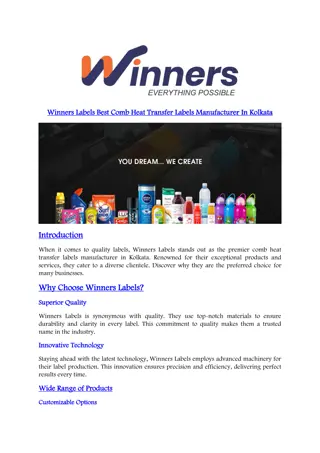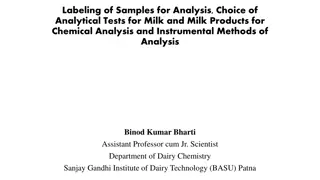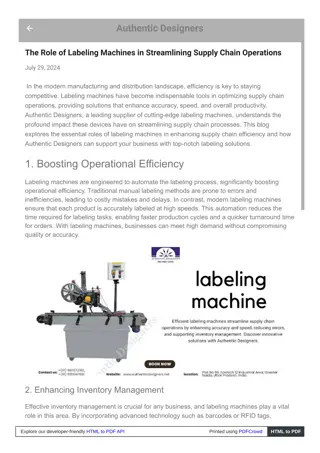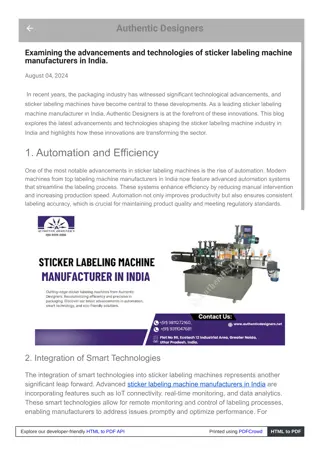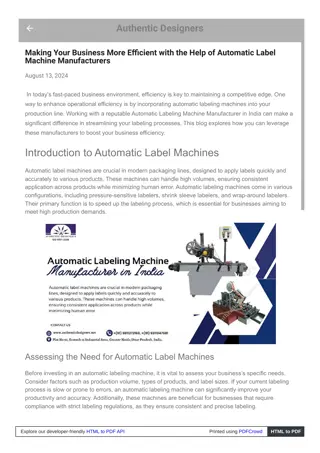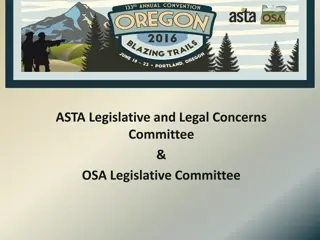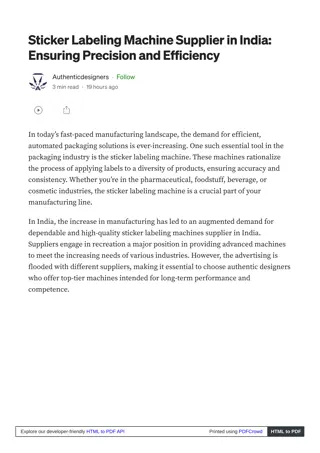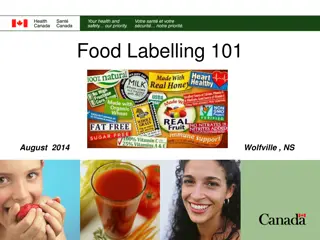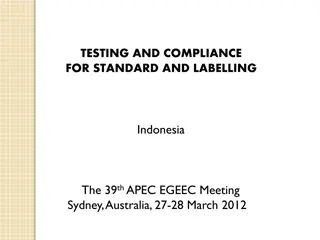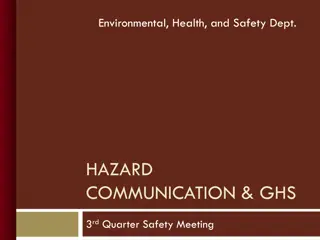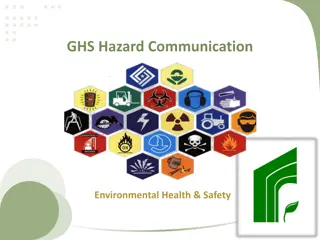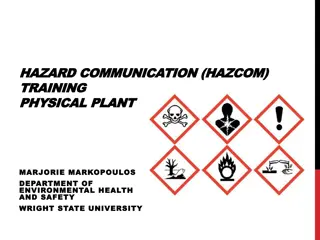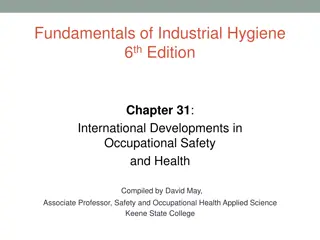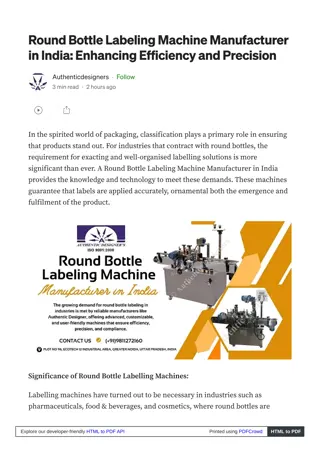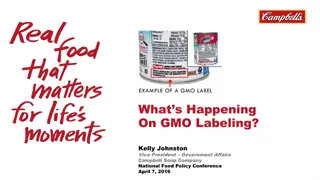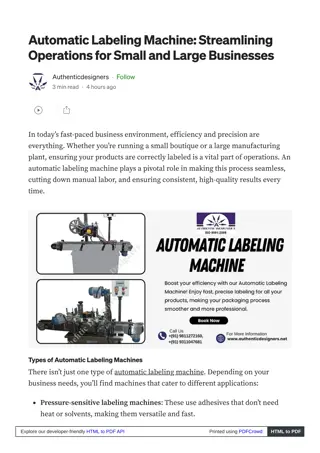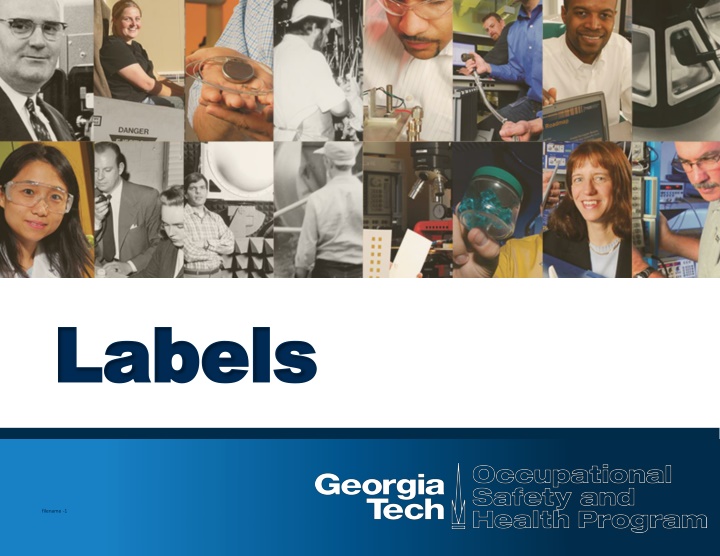
Essential Hazard Communication Labeling Information
Discover the evolution of hazard communication labels, from the old definition and elements to the new standards. Explore signal words, hazard statements, and precautionary measures essential for understanding and handling hazardous products.
Download Presentation

Please find below an Image/Link to download the presentation.
The content on the website is provided AS IS for your information and personal use only. It may not be sold, licensed, or shared on other websites without obtaining consent from the author. If you encounter any issues during the download, it is possible that the publisher has removed the file from their server.
You are allowed to download the files provided on this website for personal or commercial use, subject to the condition that they are used lawfully. All files are the property of their respective owners.
The content on the website is provided AS IS for your information and personal use only. It may not be sold, licensed, or shared on other websites without obtaining consent from the author.
E N D
Presentation Transcript
Labels Labels filename -1
Old Label Definition Any written, printed, or graphic material displayed on or affixed to containers of hazardous chemicals
New Label Definition Appropriate group of written, printed or graphic information elements concerning hazardous product, selected as relevant to target sector (s), that is affixed to, printed on, or attached to immediate container of hazardous product, or to outside packaging of hazardous product
Old Label Elements Shipped containers labeled with Product ID Appropriate hazard warnings Name & address of chemical manufacturer, importer, or other responsible party Performance-oriented specifics left to discretion of chemical manufacturer or importer
New Label Elements Shipped containers labeled with Product ID Signal word Hazard statement(s) Pictograms Precautionary statements Product & supplier identification Specifies information by hazard class & category
Signal Words Word used to indicate relative level of severity of hazard & alert reader to potential hazard on label Danger More severe hazard categories (hazard categories 1 & 2) Warning Less severe hazard categories (hazard categories 3 & 4)
Hazard Statements Phrase assigned to hazard class & category that describes nature of hazards of hazardous product, including, where appropriate, degree of hazard May be fatal if swallowed & enters airways Explosive; mass explosion hazard Extremely flammable liquid & vapor Heating may cause a fire Fatal in contact with skin
Precautionary Statements Phrase (&/or pictogram) that describes recommended measures to be taken to minimize or prevent adverse effects resulting from exposure to hazardous product, or improper storage or handling of hazardous product Wear protective gloves/protective clothing Do not breathe dusts or mists Contaminated work clothing must not be allowed out of workplace
Product Identifier Should be used on label & should match product identifier used on SDS Where substance or mixture covered by DOT, Proper Shipping Name should also be used on package Label for substance should include chemical identity of substance
Product Identifier Mixtures or alloys Label should include chemical identities of all ingredients or alloying elements that contribute to acute toxicity, skin corrosion or serious eye damage, germ cell mutagenicity, carcinogenicity when these hazards appear on label Alternatively, may require inclusion of all ingredients or alloying elements that contribute to hazard of mixture or alloy
Workplace Labeling Products will carry HazCom 2012 label at point where supplied into workplace, & label should be maintained on supplied container in workplace HazCom 2012 label or label elements should also be used for workplace containers
Workplace Labeling Alternative means of giving workers same information in different written or displayed format when such format more appropriate to workplace & communicates information as effectively as HazCom 2012 label Label information could be displayed in work area, rather than on individual containers Usually where hazardous chemicals transferred from original supplier container into workplace container or system
Workplace Labeling Often impractical to produce complete HazCom 2012 label & attach to container, due to container size limitations or lack of access to process container Temporary containers where chemical will be used by one worker within short timeframe Decanted chemicals intended for immediate use could be labeled with main components & directly refer user to supplier label information & SDS
Workplace Labeling HazCom 2012 maintains flexible approach to workplace labels in current rule, i.e., HazCom 2012 label doesn t have to be on all workplace containers Workplace labels will have to be reviewed to make sure still convey correct hazards & other information when new requirements implemented
Workplace Labeling In Appendix C, OSHA indicated by hazard class & hazard category label elements that must be on label Appendix C is basically cookbook approach to labeling; once classification of hazards is complete, Appendix C to be consulted to determine how to convey required information
Labels In past, was common to use NFPA or HMIS labels for secondary containers New labeling requirements go further, requiring Name of substance GHS signal word GHS Hazard & Precautionary Statements GHS pictograms
Labels Old labeling formats (NFPA, HMIS) 0 rating means least hazardous 4 rating being most hazardous GHS is opposite 1 classification most hazardous 4 being least hazardous
Label Ratings Inverted NFPA/ HMIS GHS/HazCom 2012 1 1 Least Most 2 2 3 3 4 4 Least Most
Labels NFPA & HMIS III labels permitted; however, information provided must be consistent with new HCS Information to be provided in English
Haz Com 1994 (Old) Label Elements ID of hazardous chemical Hazard warnings Contact information for manufacturer/importer/ responsible party
HazCom 2012 label Elements Product Identifier Signal word Pictograms Hazard Statements Precautionary Statements Supplier Identification Supplemental Information
HazCom 2012 label Elements Product Identifier Signal word Pictograms Hazard Statements Precautionary Statements Supplier Identification Supplemental Information
Labels New Label Old Label
HazCom 2012 Pictogram Hazard Classes may have Categories
Updating Labels Final rule requires containers shipped 6 months after new information identified or made available to be labeled accordingly
Summary Change in basic definition of label Product ID Signal word Hazard statement(s) Pictograms Precautionary statements Product & supplier identification NFPA/HMIS incompatibility
Summary Shipping labels Workplace labels Temporary use considerations Label updating timeframe
Workshop Activity Create a workplace label from a material used in your place of business
References OSHA Brief- Hazard Communication Standard: Labels and Pictograms https://www.osha.gov/Publications/OSHA3636.pdf OSHA Quick Card- Hazard Communication Labels https://www.osha.gov/Publications/HazComm_QuickCard_Labels.h tml

